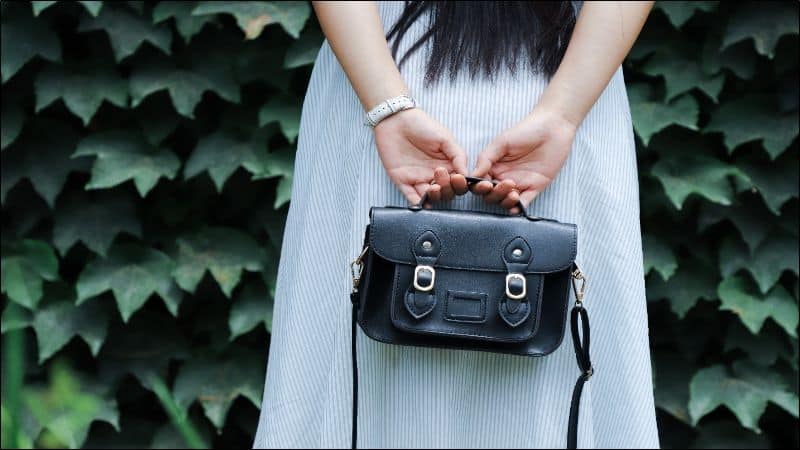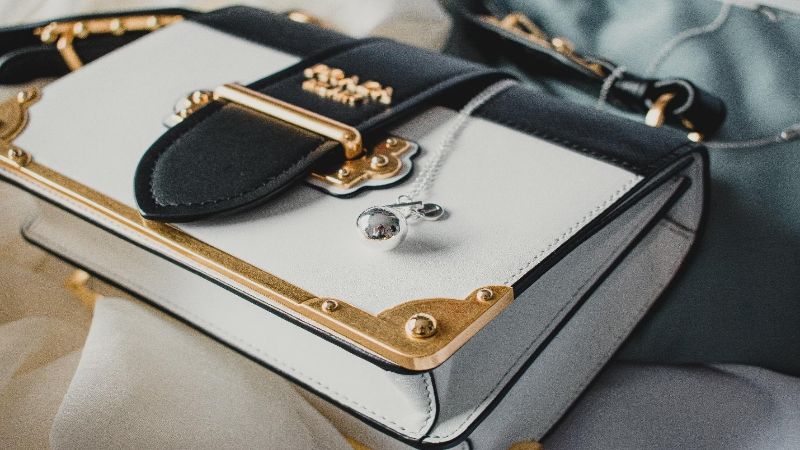Ever thought about crafting your own handbag that perfectly captures your style? Well, you’re in luck! Making handbags with fabric is not only fun, but it’s also a great way to get a custom accessory that’s truly you.

Don’t worry if you’re not a seasoned seamstress. We’ll walk through the process together, step by step, from choosing the right fabric to adding those final touches that make your bag stand out.
Choosing the Right Fabric
When you’re on the hunt for the perfect fabric for your handbag, consider durability alongside style. Cotton canvas is a sturdy option for everyday use, while silk or velvet can add a touch of luxury for evening bags. If you’re aiming for a leather-like look, faux leather fabric is widely available and comes in various textures and colors.
Here’s what you need to know:
- Weight: Heavyweight fabrics hold shape better. Think upholstery or outdoor fabrics.
- Weave: Tight weaves equal more durability. Linen can be a good compromise for a lighter, yet strong option.
- Pattern: If you’re not afraid of making a statement, opt for bold prints. For subtler bags, solid colors or small prints can be more versatile.
- Colorfastness: Check if the fabric bleeds by wetting a small piece. No one wants a handbag that stains.
- Maintenance: Consider ease of cleaning. Darker colors and patterns hide stains and wear.
Test fabric samples by folding, scrunching, and tugging. This simulates the wear and tear of daily use. Always buy a little more fabric than you think you’ll need – it allows for mistakes or design tweaks.
Local fabric stores often have salespeople who can offer valuable advice so don’t hesitate to ask for help. And don’t forget, feel is as important as look. Run the fabrics through your hands to ensure they’re to your liking. Remember, the right fabric not only defines the look of your handbag but also its functionality and longevity.
Gathering the Supplies
Once you’ve chosen your ideal fabric, it’s time to gather the rest of the supplies needed for your handbag project. You’ll need a variety of items, and quality is key. First, make a checklist. This ensures you don’t miss out on anything crucial before you start.
Essential supplies include:
- Lining material to complement your exterior fabric
- Interfacing to give your bag shape and structure
- Zippers or closures depending on your handbag design
- Coordinating thread that matches the colors in your fabric
- Hardware such as buckles, clasps, and rings to add functionality and flair
For the interfacing, you have options such as fusible or sew-in—each with its benefits. Fusible interfacing is convenient and provides a crisp finish, while sew-in can offer a softer structure. Select based on the desired end result for your handbag.
Don’t skimp on the hardware. High-quality metals won’t tarnish or break easily, ensuring your handbag lasts and looks good over time. Regarding zippers, opt for ones that glide smoothly and have a strong closure system.
Tools You’ll Need:
- Sewing machine that can handle the thickness of your fabric
- Scissors or fabric cutter for precise cuts
- Measuring tape to ensure accuracy
- Pins and/or fabric clips to hold pieces in place while sewing
- Seam ripper, just in case of mistakes
Visit your local craft store or browse online retailers to find your supplies. Often, you can find kits with the necessary hardware for specific handbag designs. Make sure to read reviews before purchasing to confirm the quality of the items.
Once your supplies are lined up and ready, you’re set to begin the assembly of your handbag. Remember, the right tools and materials make the process smoother and your end product more professional. Quality in equals quality out.
Creating a Pattern
Once you’ve got your supplies in order, it’s time to dive into pattern-making. Pattern creation is the blueprint of your handbag, acting as a critical guide for cutting your fabric and materials accurately. Begin by deciding the size and shape of your handbag. Will it be a tote, a clutch, or perhaps a crossbody bag? This will determine the overall dimensions of your pattern.
Your handbag’s functionality is paramount, so think about the number of pockets and their placement. Do you need a separate compartment for your phone? How about a secure spot for your keys? These considerations will affect your pattern’s complexity.
Next, sketch out your handbag design on paper. This doesn’t have to be a work of art; a simple line drawing works just fine. Be sure to include all the components, like straps, flaps, or connectors. Precision is key—make sure each part is drawn to scale.
After your initial sketch, transfer your design onto pattern paper. Some prefer using graph paper for accuracy, especially for straight lines and angles. For curved edges, a flexible curve ruler can be invaluable. Once you’ve transferred your design, cut out the pattern pieces with sharp scissors or a rotary cutter for clean edges.
Remember to add seam allowances around each pattern piece. A standard seam allowance is about 1/4 to 1/2 inch, but you can adjust this based on your sewing preference or if you’re including piping or other embellishments.
- Trace
- Cut
- Mark notches and other construction cues
Make sure to label each piece clearly, noting the top and bottom and whether it’s the front, back, or sides of the bag. Labels prevent confusion during the assembly stage.
« Suede Handbag Cleaning Guide: Revitalize Your Purse with Ease
Why Handbags Are Essential: Unlock Daily Efficiency & Style »
Double-check your pattern by measuring the dimensions and comparing them against your initial design. This step will save you time and materials in the long run. Only once you’re satisfied with the accuracy of your pattern are you ready to proceed in bringing your handbag vision to life.
Cutting and Preparing the Fabric
Once your pattern is ready, it’s time to move on to the fabric. Selecting the right fabric is crucial for your handbag’s appearance and durability. Opt for materials that complement your design yet stand up to regular use. Heavy cotton, canvas, and leather are popular choices.
Lay out the fabric on a large, flat surface. Ensure it’s smooth and wrinkle-free before you begin; iron it if necessary. Place the pattern pieces on top, paying attention to the grain line marked on your patterns. This is vital for the hang and final look of the bag.
When you’re satisfied with the placement, pin the patterns securely to the fabric. This prevents them from moving and ensures accuracy while cutting. If you’re using leather or a material that pins may damage, use weights to hold the pattern in place.
Cut with precision along the edges of the pattern. Sharp fabric scissors or a rotary cutter can provide clean cuts, essential for a polished finish. Take your time here; rushed cuts can lead to mistakes that may affect the assembly of your handbag.
With all pieces cut, remove the patterns and move on to marking any notches or dart points directly onto the fabric. These are your guides for sewing and assembling the handbag later on. Use tailor’s chalk or a fabric pen that won’t leave a permanent mark.
Lastly, reinforce the fabric where necessary. Areas that will bear more stress, like straps or closures, may need interfacing or additional layers to ensure they hold up under use. Cut interfacing to the same size as your fabric pieces and iron on as per the manufacturer’s instructions.
With your fabric cut and prepped, you’re ready for the next steps of piecing together your handbag. Keep the momentum going; you’re on your way to creating something unique and functional.
Sewing the Pieces Together
Once your fabric pieces are cut and ready, it’s time to bring your handbag to life. Begin by aligning the edges of your cut fabric, making sure patterns and notches match. Use straight pins or wonder clips to hold them in place; this ensures precision as you sew.
Thread your sewing machine with a thread color that complements your fabric. Select a stitch length—usually 2 or 3 mm is ideal for most fabrics. If you’re working with leather or thick materials, opt for a longer stitch to avoid perforating the fabric too closely, which could cause tearing.
Start sewing the exterior pieces first. Stitch a seam allowance that’s consistent throughout for a professional look. Most patterns will indicate the necessary seam allowance, but a common allowance is 1/4 or 1/2 inch. Backstitch at the beginning and end of each seam to secure the stitches.
After the exterior, sew the lining following the same process. Remember to leave an opening in the lining. You’ll need this gap to turn the bag right side out after attaching the lining to the exterior.
Next, attach any pockets or compartments. This could include zipper pockets or simple slip pockets. Place them on the bag’s interior or exterior depending on the design before sewing the main sections together.
Handle attachments come next. If your design includes fabric straps, attach them between the exterior and lining layers. Make sure they’re securely in place and double-check their positioning before sewing to avoid a crooked final product.
As you progress, iron the seams open or to one side depending on the bulk of the fabric. This ensures the bag will lay flat and look crisp.
Keep the momentum by continuously checking for symmetry and alignment. Pay extra attention to curves and corners—they require precision and patience but make a significant difference in the handbag’s appearance.
Adding the Final Touches
Once your handbag’s main structure is complete, the final touches are where your craftsmanship shines. It’s time to add those small details that make a big impact. Let’s dive in.
Attach Hardware
Your handbag isn’t just fabric—it’s a functional piece of art. Add your clasps, buckles, and feet now. These elements aren’t just decorative; they’re crucial for functionality. You’ll need the following steps:
- Position your hardware where you want it on the bag.
- Mark the spots with a fabric pen for accuracy.
- Carefully cut slits or holes for buckles or clasps using a seam ripper or small scissors.
- Secure them according to the manufacturer’s instructions, usually involving screws or small rivets.
Remember, precision is key. You don’t want your handbag’s straps breaking or clasps coming loose during use.
Inserting the Lining
Before you attach the lining, ensure all pockets are secured, and trims are in place. Slip the lining inside the exterior of the bag, wrong sides together. Pin the top edges, aligning them neatly. Now, stitch the lining to the bag, using a blind or hidden stitch for a clean finish. Maintain an even seam allowance, and remove pins as you go.
Edging and Topstitching
Topstitching can elevate your handbag’s look, providing a professional touch. It involves stitching a line or two near the edges:
- Choose a thread that matches or contrasts with your fabric for different effects.
- Adjust your sewing machine for longer stitches; typically, 3mm to 4mm is good for topstitching.
- Keep your stitching lines straight and maintain an even distance from the edge.
Ironing and Flattening
The last bit of ironing will set your handbag’s shape. Iron out any wrinkles and ensure a crisp finish. Be mindful of the fabric’s heat requirements—don’t scorch your creation.
- Use a pressing cloth if necessary.
- Press seams flat and smooth out any bulky areas.
Functionality Test
Before you call it done, give your handbag a trial run. Check zippers, clasps, and pockets. Make any necessary adjustments now. Ensure the bag hangs well on your shoulder and that everything opens and closes smoothly. After all, your handbag isn’t just a fashion statement; it’s a daily companion.
Conclusion
You’ve now mastered the art of fabric handbag creation from cutting the pattern to adding those final touches that make your piece unique. Remember the importance of those final steps—they’re what make your handbag not just homemade but handcrafted with professionalism. It’s time to step back, admire your work and enjoy the satisfaction of a job well done. Your new accessory is ready to make a statement wherever you go. So go ahead, flaunt your creation, and maybe even start planning your next project!
Frequently Asked Questions
What materials are commonly used to make handbags?
Handbags can be crafted from various materials including leather, canvas, nylon, and synthetic materials, each offering different aesthetics and durability levels.
How important is design in creating a handbag?
Design is crucial as it not only dictates the handbag’s style and appearance but also its practicality and functionality for the intended user.
What is the role of hardware in handbags?
Hardware such as clasps, buckles, and feet add both functionality and a touch of style to handbags, often serving as the focal point for design aesthetics.
What are the final steps in handbag creation?
The final steps include attaching hardware, inserting the lining, edging and topstitching, ironing and flattening the material, and conducting a functionality test.
Why is a functionality test important for handbags?
A functionality test ensures that the handbag opens, closes, carries weight, and performs as expected, indicating the product is well-made and ready for use.










